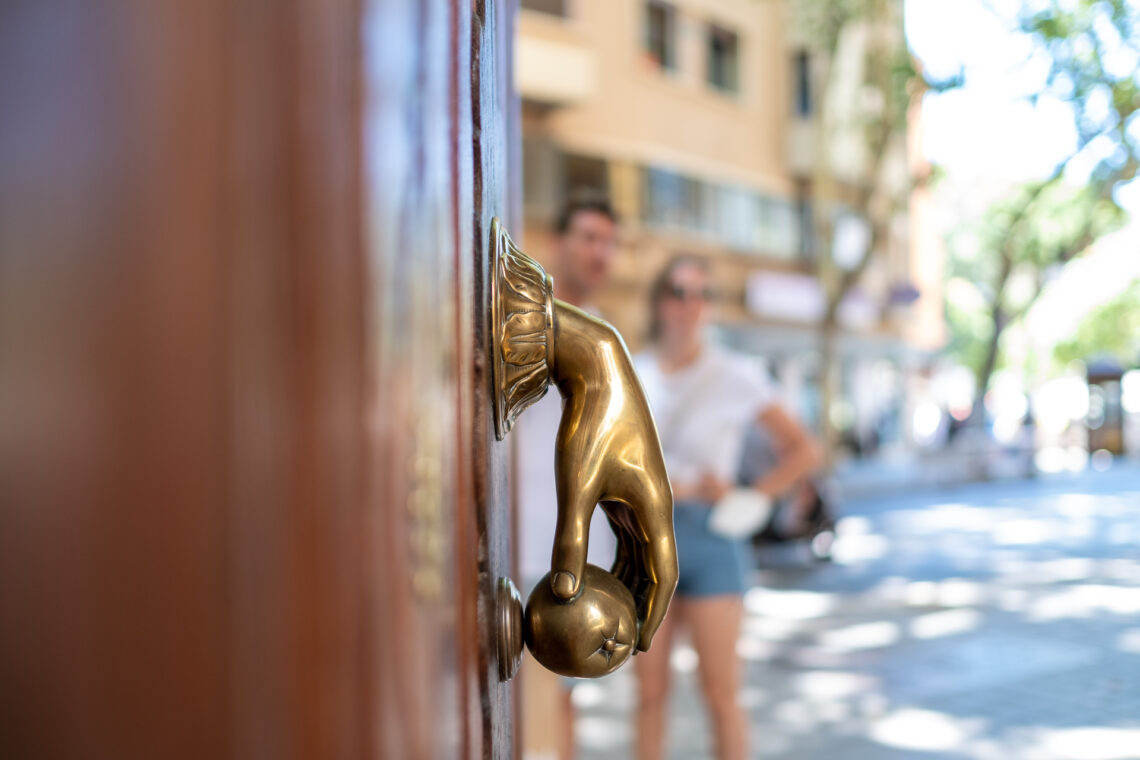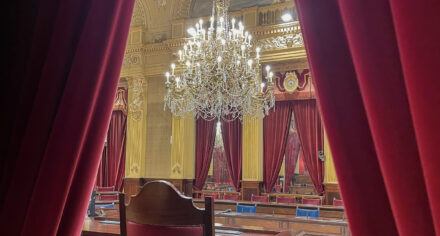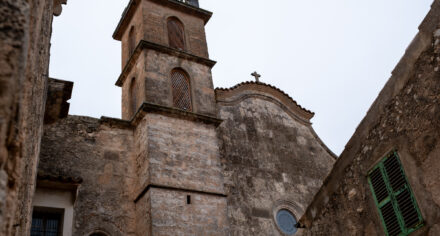Hidden in the maze of old town, behind locked gates and whispered thresholds, the patios in Palma unfold like stories waiting to be told. As sunlight filters across sandstone arches and history murmurs from walls, each courtyard reveals a moment frozen in time. Stroll through the narrow streets and silent alleys, peek through iron gates, and step into courtyards where past and present meet.
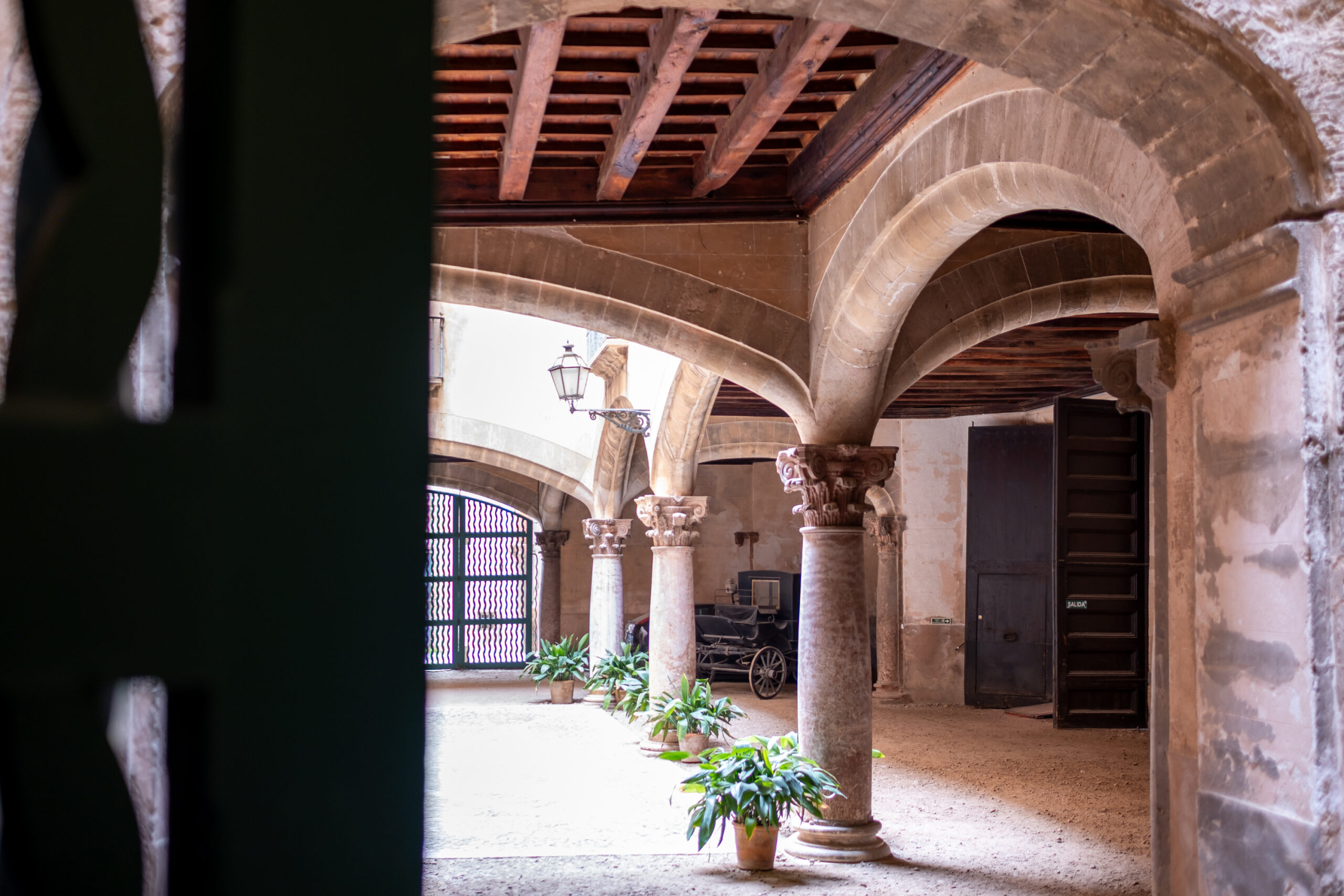
Can Vivot: Once Upon a Time in Palma
Behind a wrought-iron gate lies a world unchanged for 300 years, the medieval city palace of Can Vivot. Its patio is not just architecture but memory made manifest.
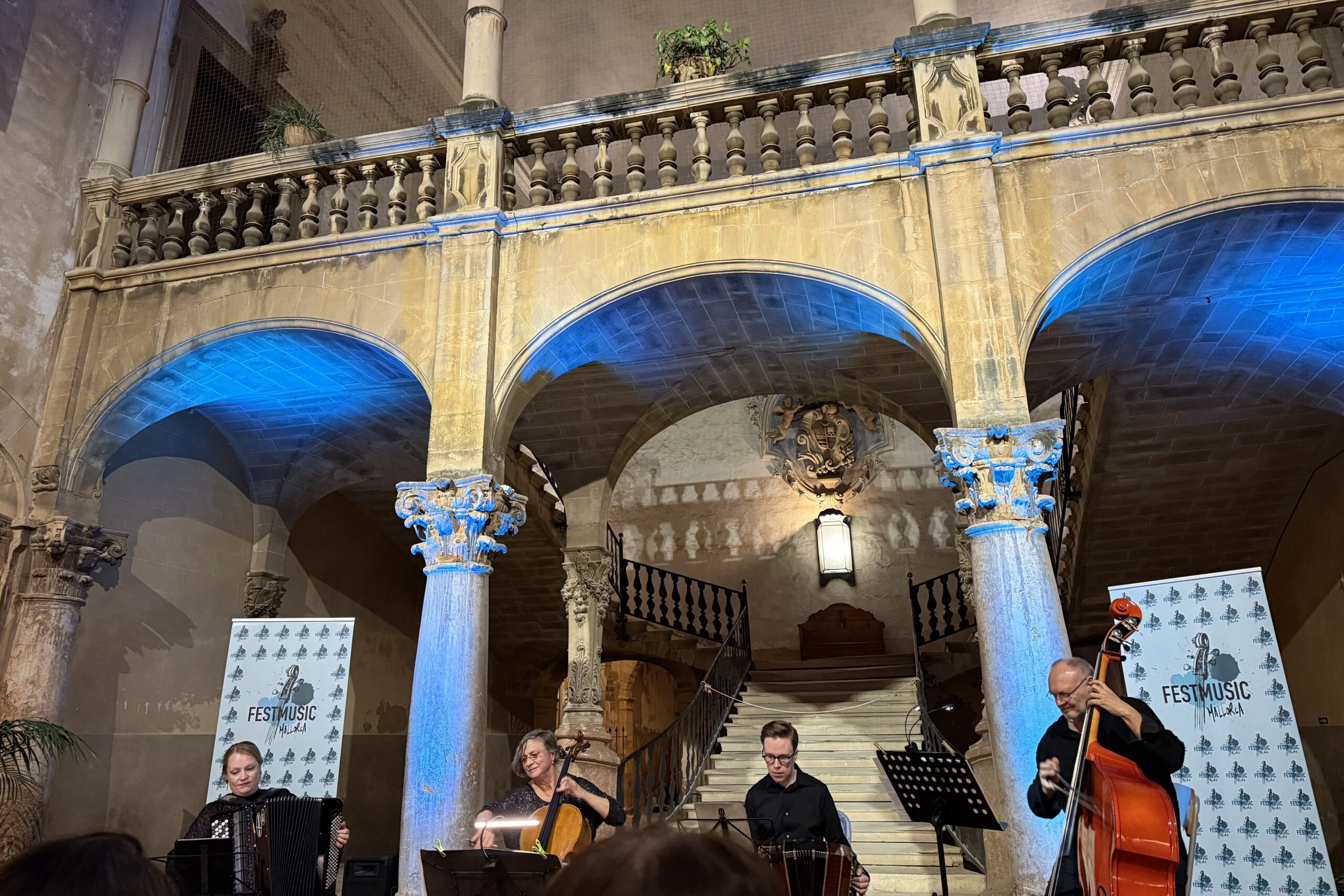
Family-owned for 19 generations, Can Vivot today offers guided tours of its historic rooms. And occasionally opens its doors for special events in its magnificent courtyard. The moment you enter, the past completes its embrace. Horse‑drawn carriages rest beneath ancient sandstone arches, some dating back to Arab times.
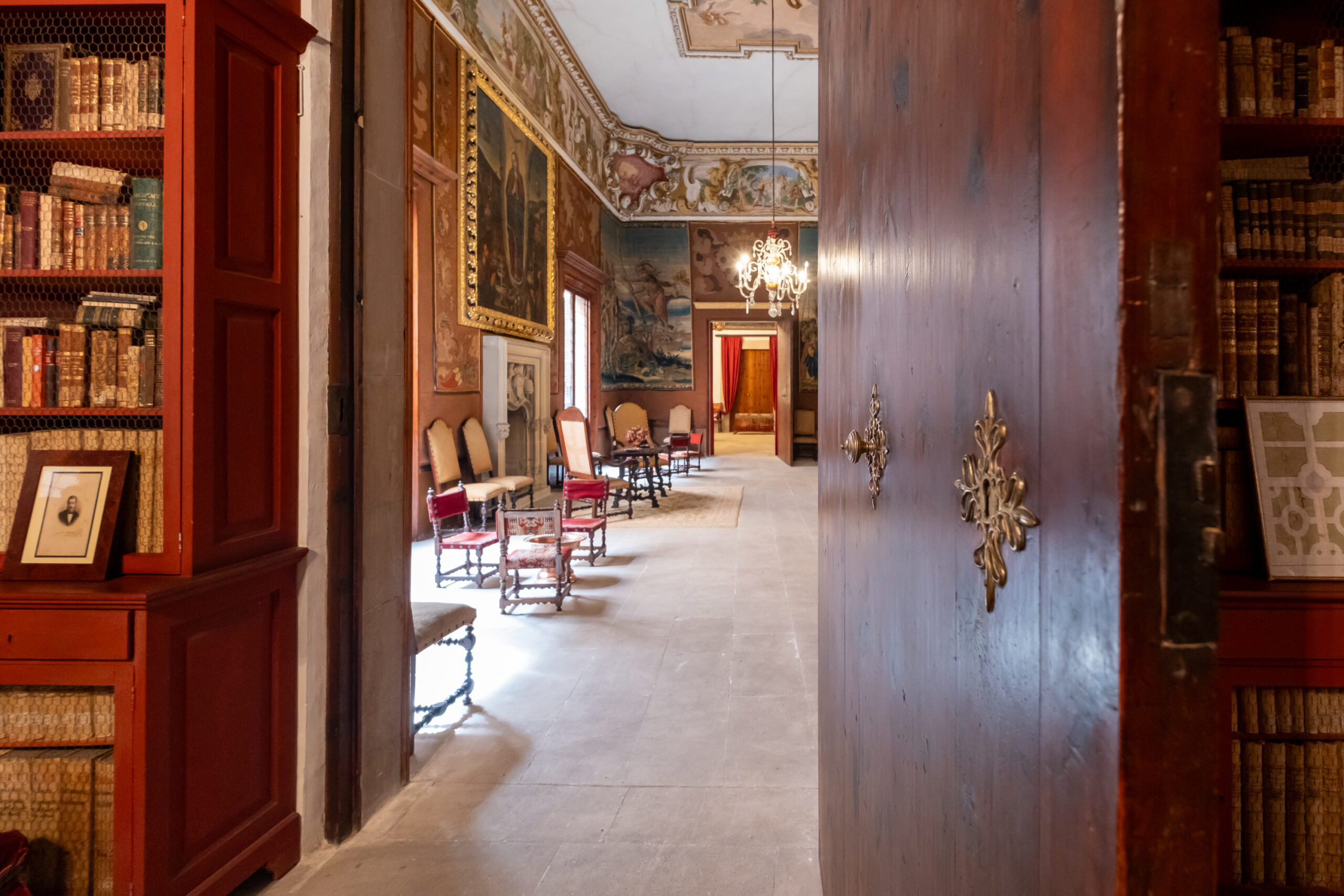
A sense of enchantment lingers in the air, accompanied by the echo of footsteps on centuries‑worn stone. Ascending the grand staircase, guided by light that spills through leaded glass into the music room, you feel the weight of history. And the pulsing life of craft still alive in every detail.
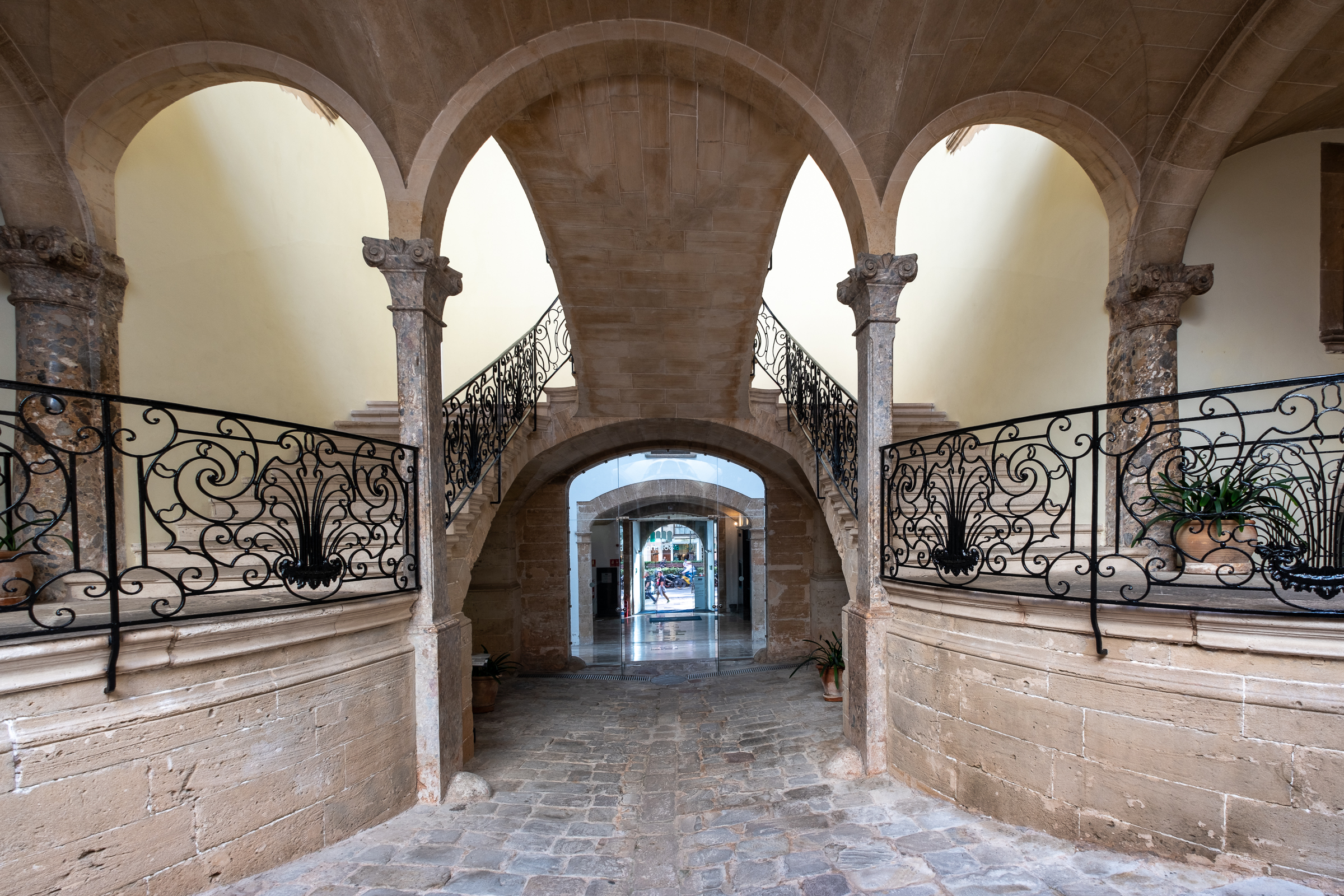
Casal Solleric: Where Art and Architecture Converge
On magnificent Passeig del Born you’ll find Casal Solleric, a Baroque manor reborn as a contemporary art haven. Its spacious patio, paved with old cobblestones and framed in graceful arches, opens like a secret into another world.
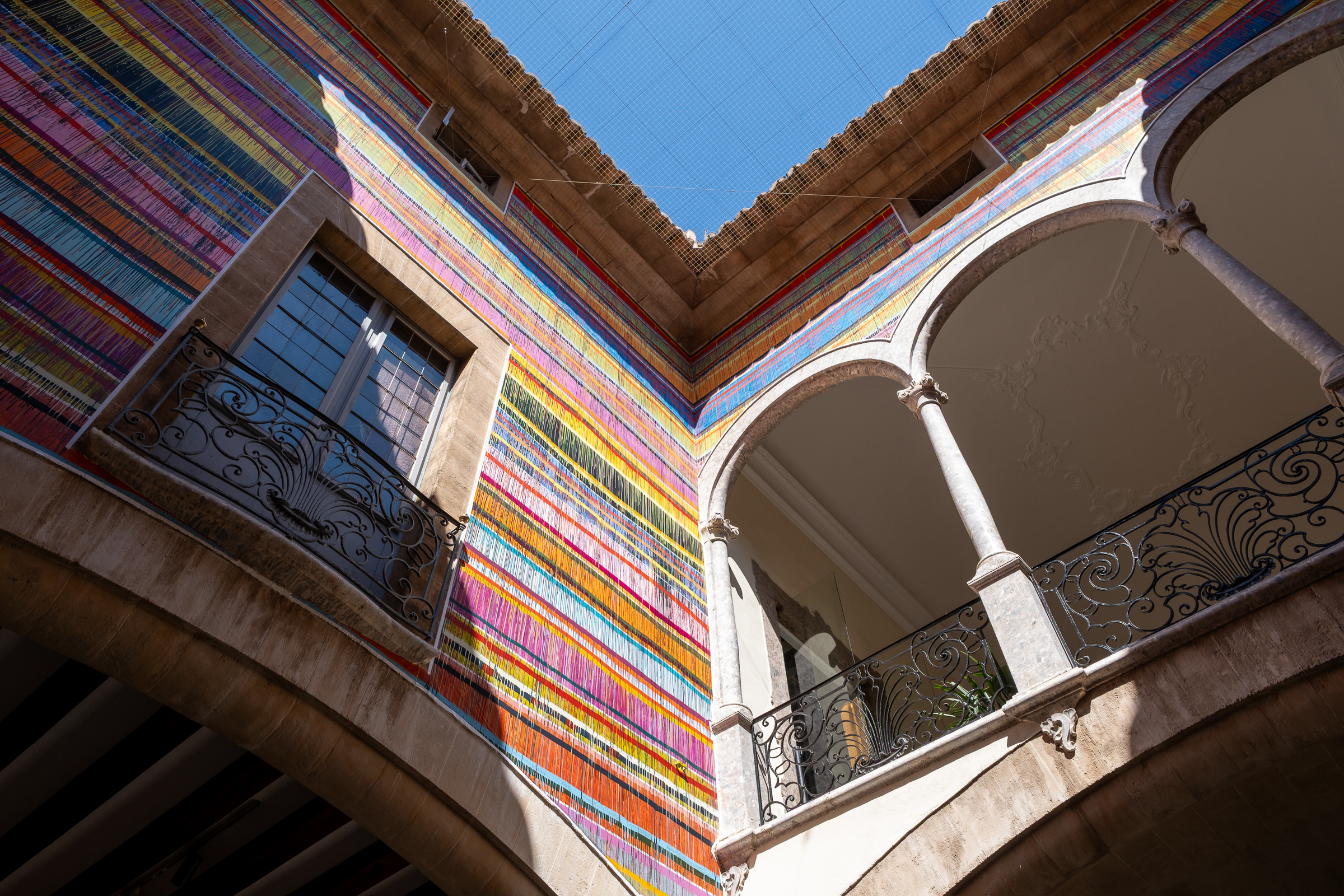
A wrought-iron banister guides you to the planta noble, where a half‑open door invites you into lofty drawing rooms. Spaces that once sheltered aristocrats now pulsate with modern exhibitions. Casal Solleric is a place where the solidity of the past meets the fluidity of art, where patios in Palma become bridges between centuries.
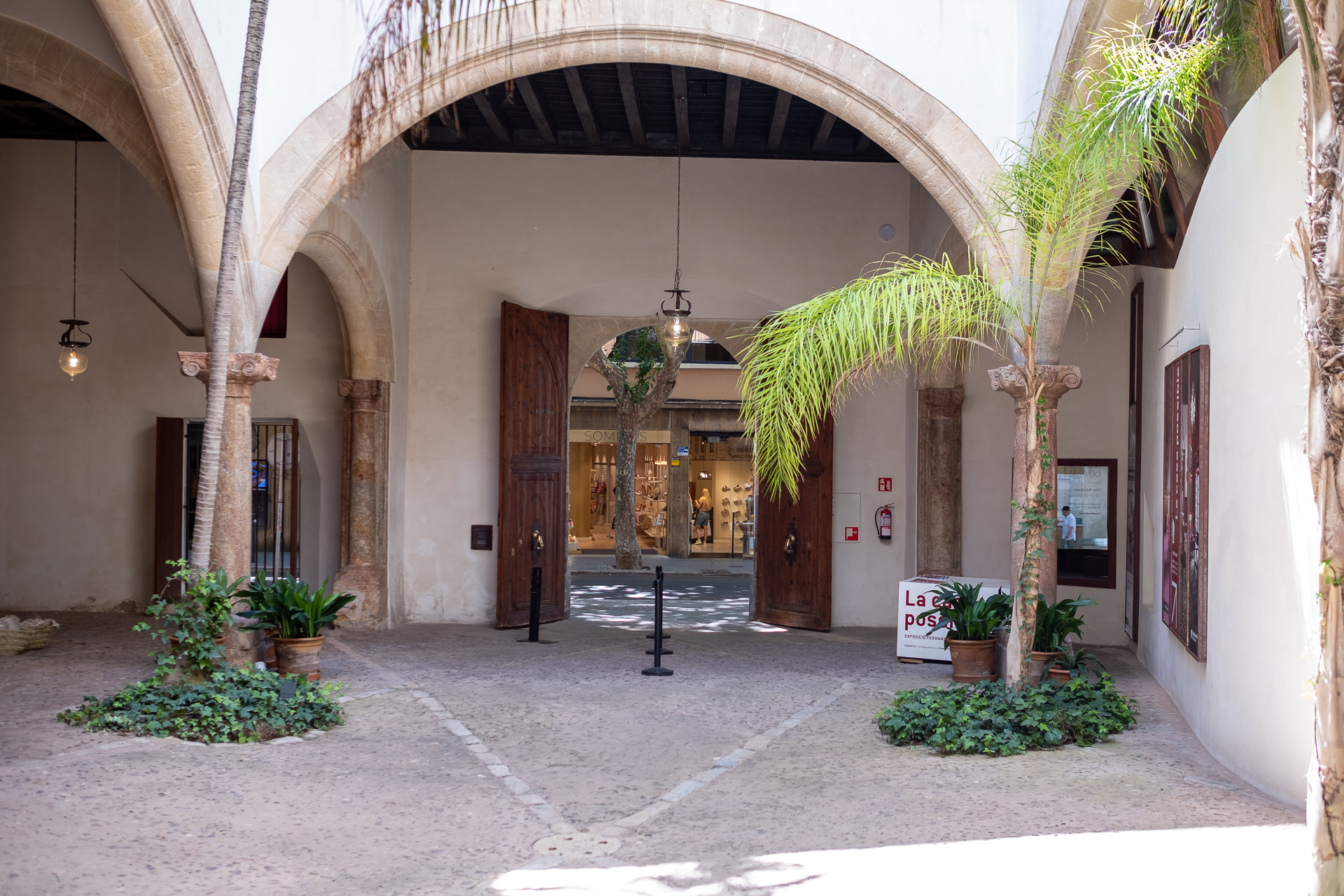
Can Balaguer: Noble Living Rooms Revealed
Just around the corner on Carrer Unío another restored town palace offers a window into 17th‑century aristocratic life. The renovation of Can Balaguer breathed life into rooms furnished with pieces from its own heritage and that of kindred palaces like Casal Solleric.
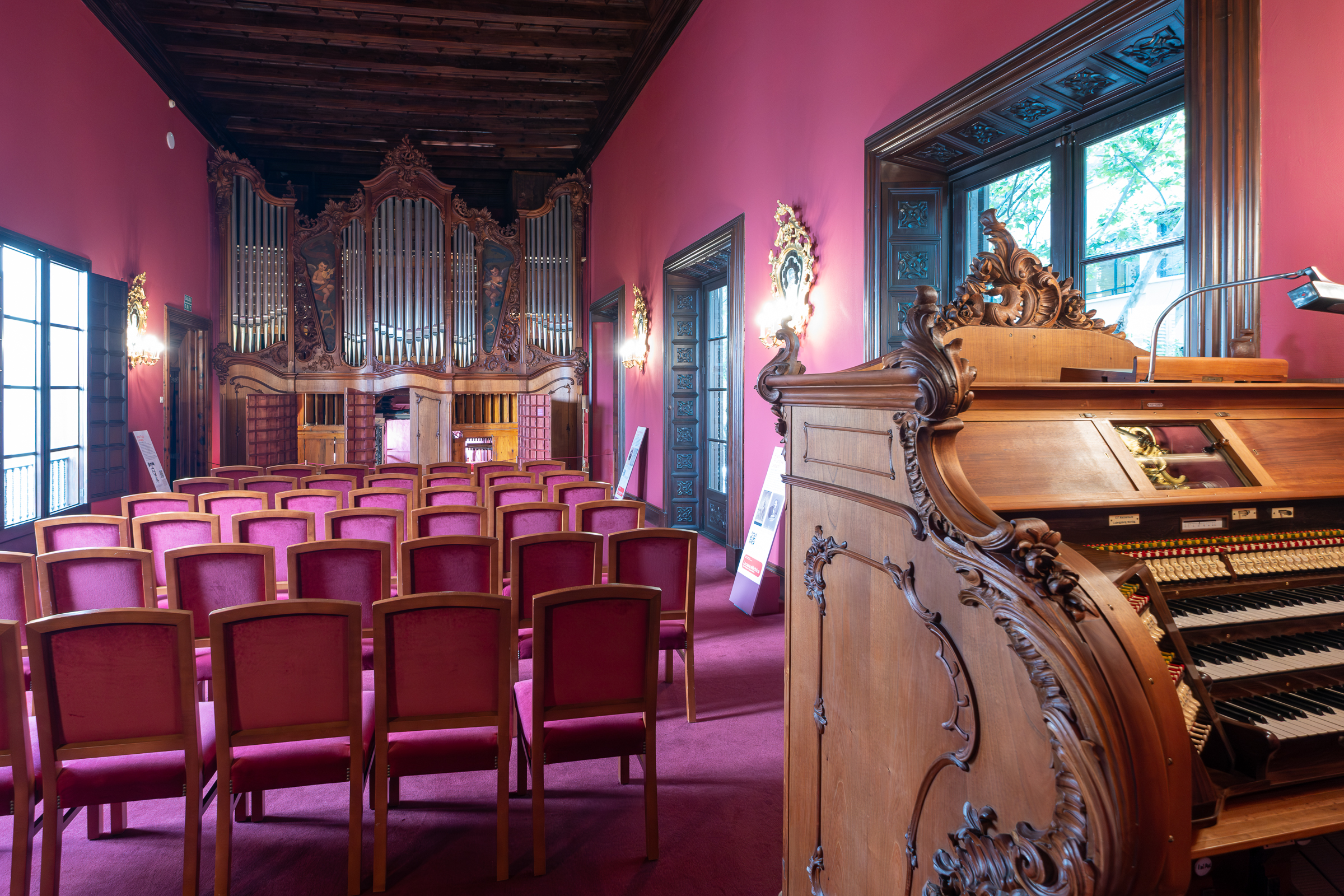
Though its patio is rather discreet, it stands as a silent stage for history. One that invites you to imagine candlelit evenings where music from the private organ once filled the halls.
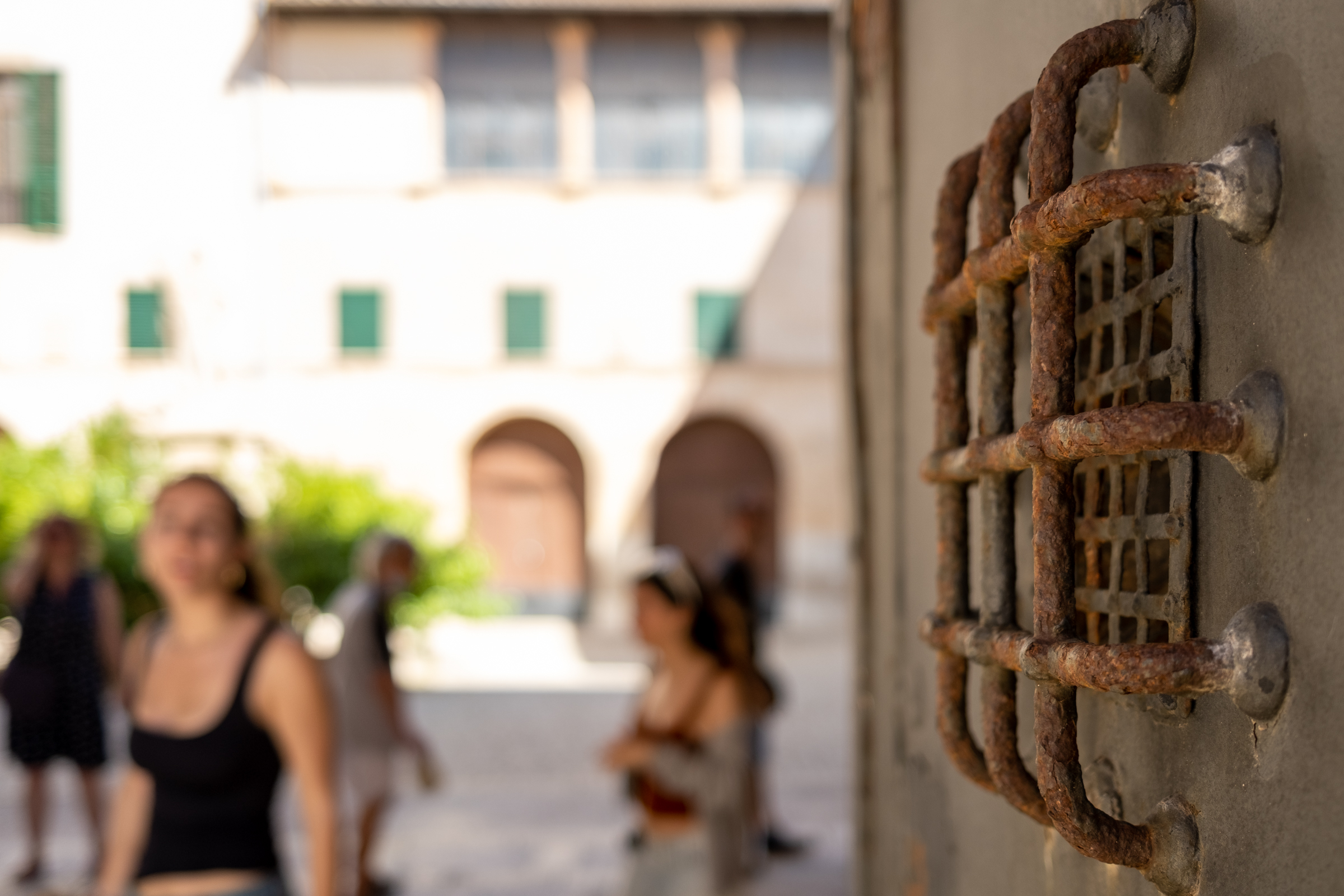
Museu d’Art Sacre: A Sacred Oasis
Next to the Episcopal Palace the impressive courtyard of the Museu d’Art Sacre softens the edge of the city. Here, beside an ancient cistern, time seems to pause in a filtered glow. Inside the museum, paintings and sculptures of Christ, the Virgin, and Mallorcan saints spiral upward in devotional intensity, hinting at the once‑powerful reach of religious imagery in a pre‑media world. The patio serves as both threshold and respite, leading the visitor from the street into contemplation.
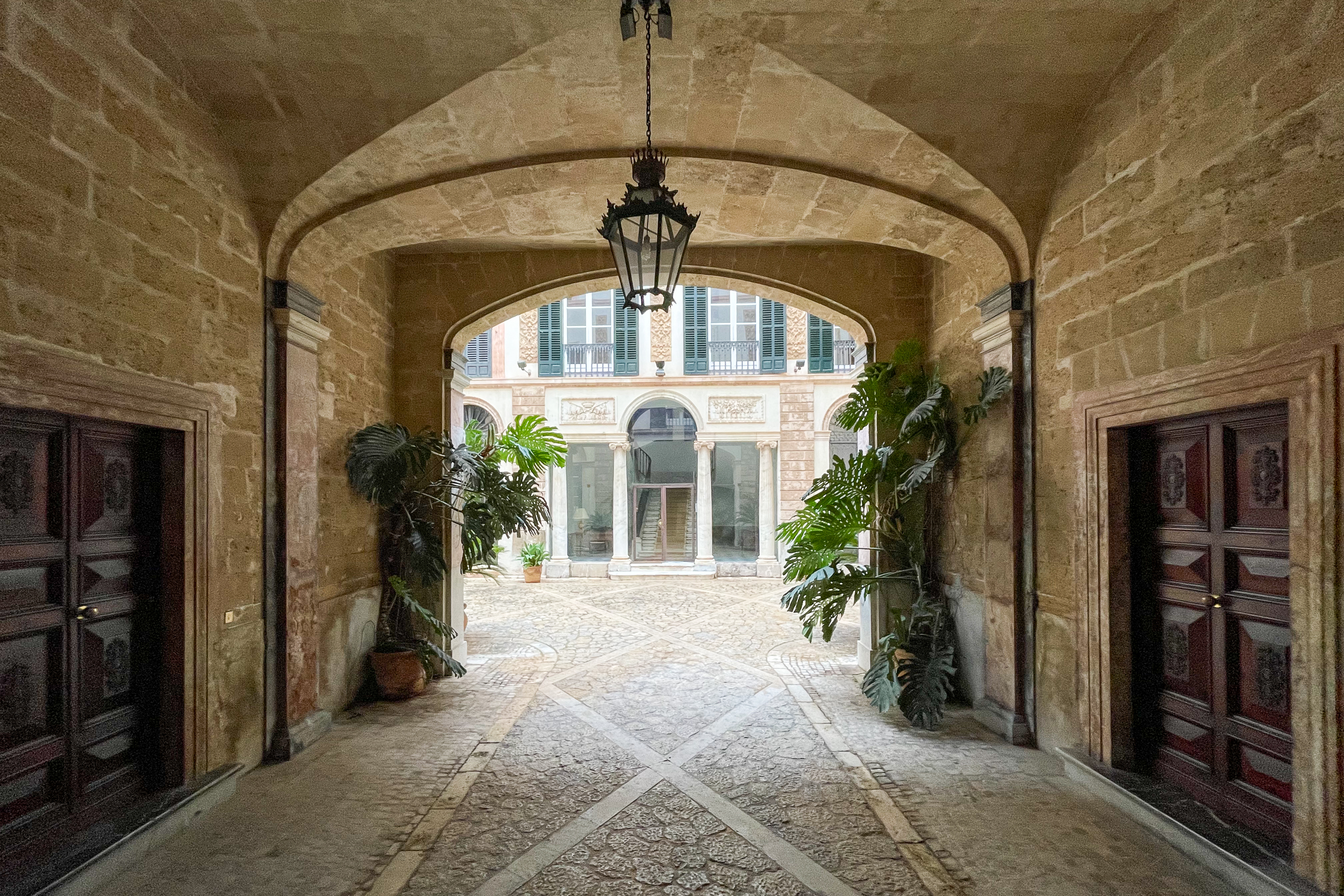
Patios in Medieval Architecture: Shade, Shadow, Solace
Patios were not mere ornament in medieval architecture. They offered shade from the Mallorcan sun, creating a sanctuary of cool air. They ensured privacy without isolation, while allowing social life to breathe. Water, plants, and architecture formed a micro‑climate and a social arena. Behind high walls, families gathered in open air, and daily rituals unfolded in soft light and deep shadow.
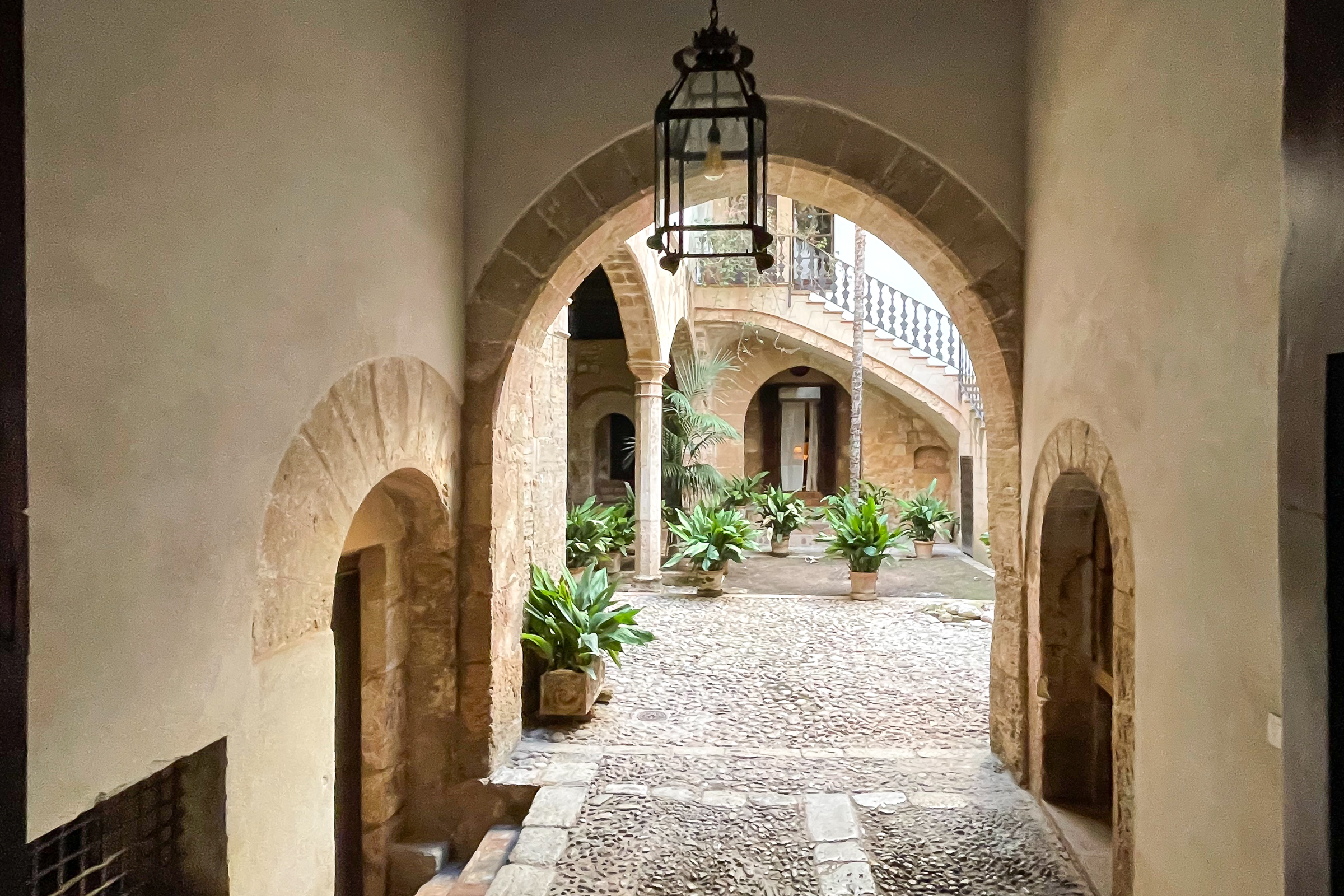
Hidden Courtyards: The Private Patios of Today
Although most patios in Palma may remain locked, their presence whispering through wrought‑iron grilles, heavy wooden gates, and glimpses of shaded plant life. Small, private courtyards flicker into view for an instant, then vanish behind closing doors. Modern fragments of the past, and living testimonies to everyday life in the city, today. Intimate sanctuaries of light and shadow, inviting imagination and discovery, even in passing.
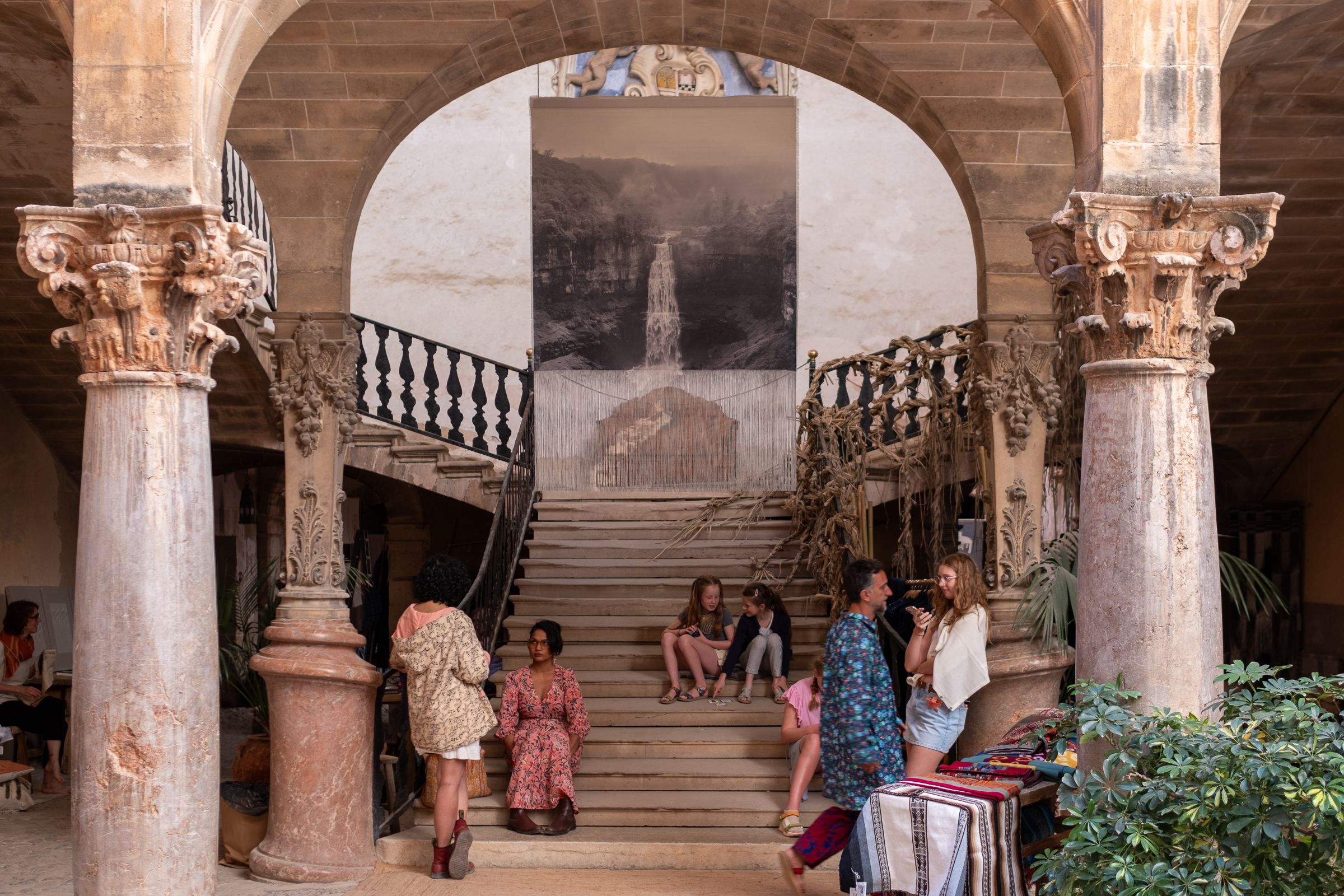
Patios in Palma are more than architectural features, they are living stories in stone. Each gate, each arch, each hidden courtyard is a doorway to another time. And as you wander, you become part of their tale. ![]()

